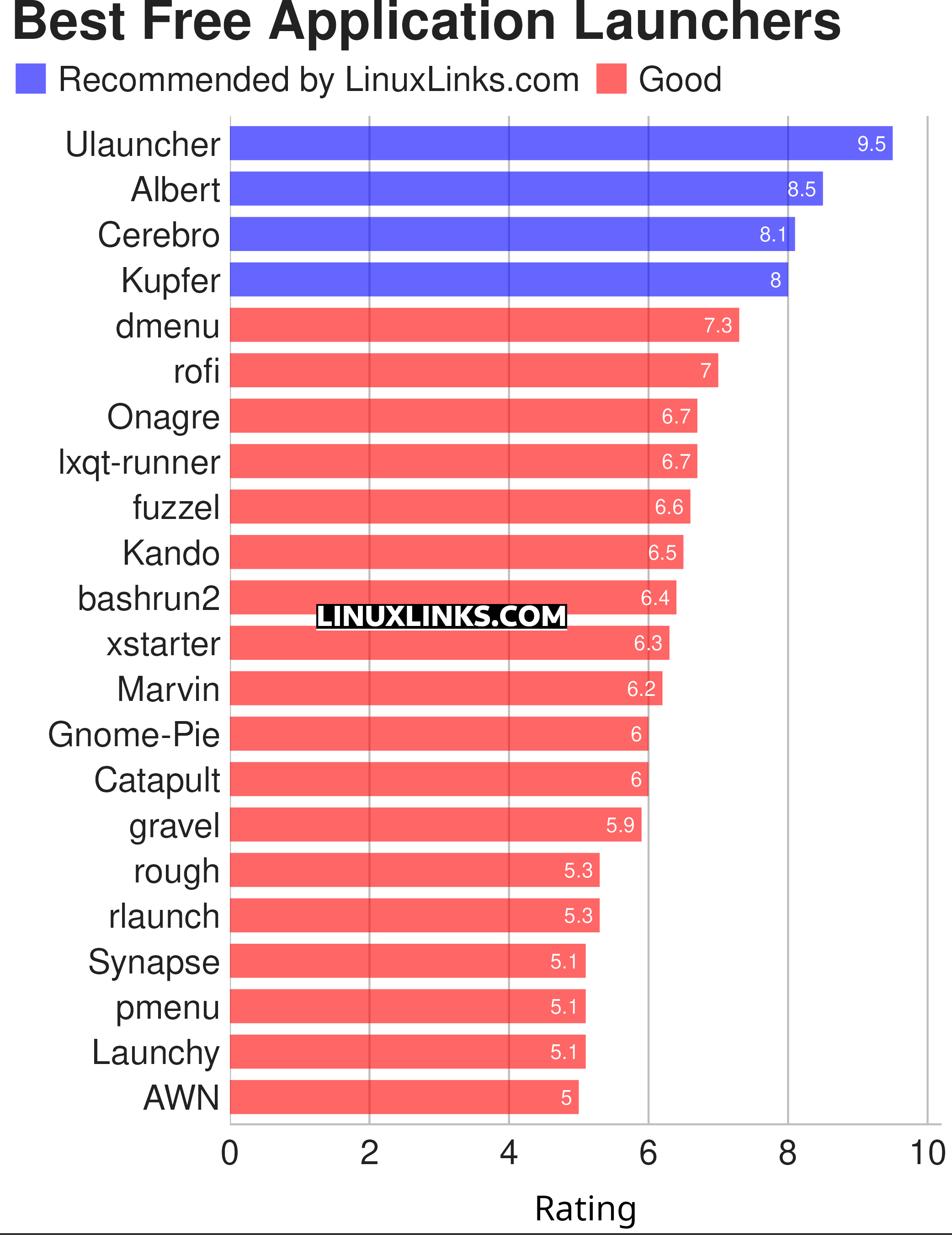Application launchers play an integral part in making the Linux desktop a more productive environment to work and play. They represent small utilities which offers the desktop user a convenient access point for application software and can make a real boost to users’ efficiency.
An application launcher helps to reduce start up times for applications by indexing shortcuts in the menu. Furthermore, this type of software allows users to search for documents and other files quicker by indexing different file formats. This makes them useful for launching almost anything on a computer including multimedia files, games, and the internet. Application launchers often support plug-ins, adding to their versatility.
To provide an insight into the quality of software that is available, we have compiled a list of 22 high quality Linux application launchers. Hopefully, there will be something of interest for anyone who wants to see productivity improvements in their workflow.
We make the following recommendations captured in a legendary LinuxLinks-style chart. Only free and open source software is eligible for inclusion.

Let’s explore the application launchers at hand. For each title we have compiled its own portal page, providing a screenshot of the software in action, a full description with an in-depth analysis of its features, together with links to relevant resources.
| Application Launchers | |
|---|---|
| Ulauncher | Fast application launcher written in Python |
| Albert | Desktop agnostic launcher, inspired by OSX’ Alfred launcher |
| Cerebro | A launcher to improve your productivity and efficiency |
| Kupfer | Fast and lightweight desktop summoner/launcher |
| dmenu | Fast and lightweight dynamic menu |
| rofi | Window switcher, application launcher and dmenu replacement |
| Onagre | General purpose application launcher for X and Wayland |
| lxqt-runner | LXQt application launcher |
| fuzzel | Application launcher for wlroots based Wayland compositors |
| Kando | Pie menu to launch applications, simulate hotkeys, open URLs |
| bashrun2 | Launch applications from interactive bash sessions |
| xstarter | Lives in the terminal and works well with tiling window managers |
| Marvin | Uses different modules to provide different functionalities |
| Gnome-Pie | Circular application launcher made of several pies |
| Catapult | Launch apps, open files and do basic calculation |
| gravel | Basic FLTK UI |
| rough | GTK based application launcher |
| rlaunch | Fast, lightweight and modern application launcher for X11 |
| Synapse | Semantic graphical launcher written in Vala |
| pmenu | Dynamic terminal-based menu inspired by dmenu |
| Launchy | Utility designed to help users forget about the application menu |
| Avant Window Navigator | OS X like panel for the GNOME Desktop |
This article has been revamped in line with our recent announcement.
dmenu and pmenu are similar in function to application launchers in that they allow quick launching of programs from a graphical environment using the keyboard.
 Read our complete collection of recommended free and open source software. Our curated compilation covers all categories of software. Read our complete collection of recommended free and open source software. Our curated compilation covers all categories of software. Spotted a useful open source Linux program not covered on our site? Please let us know by completing this form. The software collection forms part of our series of informative articles for Linux enthusiasts. There are hundreds of in-depth reviews, open source alternatives to proprietary software from large corporations like Google, Microsoft, Apple, Adobe, IBM, Cisco, Oracle, and Autodesk. There are also fun things to try, hardware, free programming books and tutorials, and much more. |

No Gnome-Do?
That project is as dead as a dodo!
KRunner is a launcher that is built into KDE Plasma but not in this roundup. I think an update is warranted. 😀
I think the roundup is looking at standalone application launchers, not launchers that are integral to a specific desktop environment. After all, desktop environments such as GNOME, MATE all have application launchers.
MATE doesn’t have an application launcher, it uses Synapse. GNOME has a full screen menu rather than an app launcher.
The term Application Launcher is awful in regards to what they do. Yes they launch applications but they are much much more than that. KRunner is one of the better options in the space and it has a ton of plugins for customization of it. I understand your point but the roundup should include the best options if it is called “best” 😀
Personally, I agree with the decision not to include KRunner in this article. It’s pretty clear the article is focused on standalone applications that are essentially desktop-agnostic.
KRunner is sometimes described as an application. The definition of application is somewhat nebulous. And KDE do themselves call KRunner an application. But it can also be argued it’s better described as a Tier 3 framework, and part of KDE Frameworks.
Given that using KRunner forces the user to use KDE (irrespective of whether they want to use that desktop environment) as it relies on the KDE infrastructure, is another reason why it’s correct not to include it here.
Kupfer FTW!